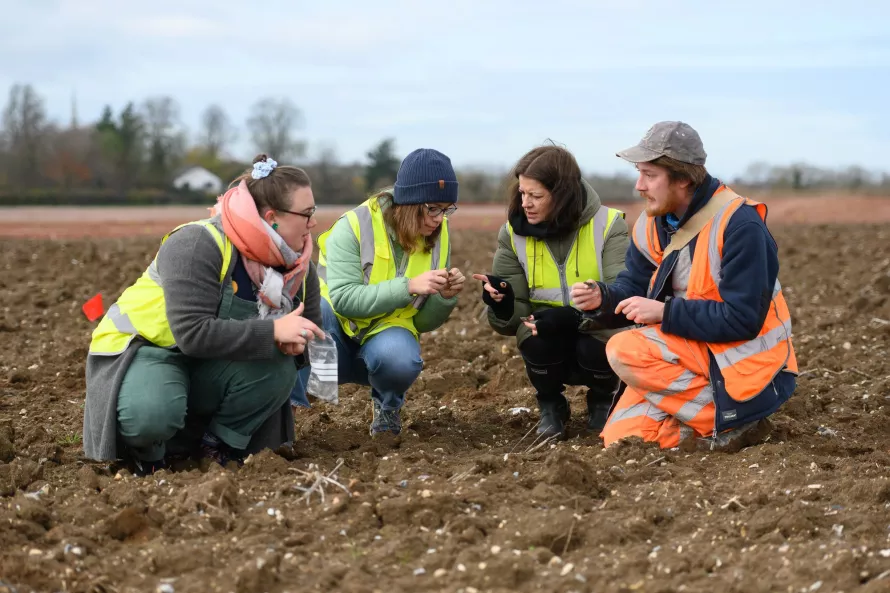As part of the continuing investigation into the archaeology at our Hinxton site, one area was put aside in order to conduct a fieldwalking survey. Fieldwalking is a useful, non-invasive technique that can quickly determine whether there was human activity in an area in the past.
At Hinxton, we were primarily looking for worked flint that may indicate prehistoric activity in the fieldwalking area. We were joined in our fieldwalking at the end of last year by members of staff working across the road at the Wellcome Genome Campus. Once everyone had arrived and been briefed about safety (and given a stylish hi-vis vest), our volunteers were given a quick lesson on how to spot worked flint whilst out in the field.
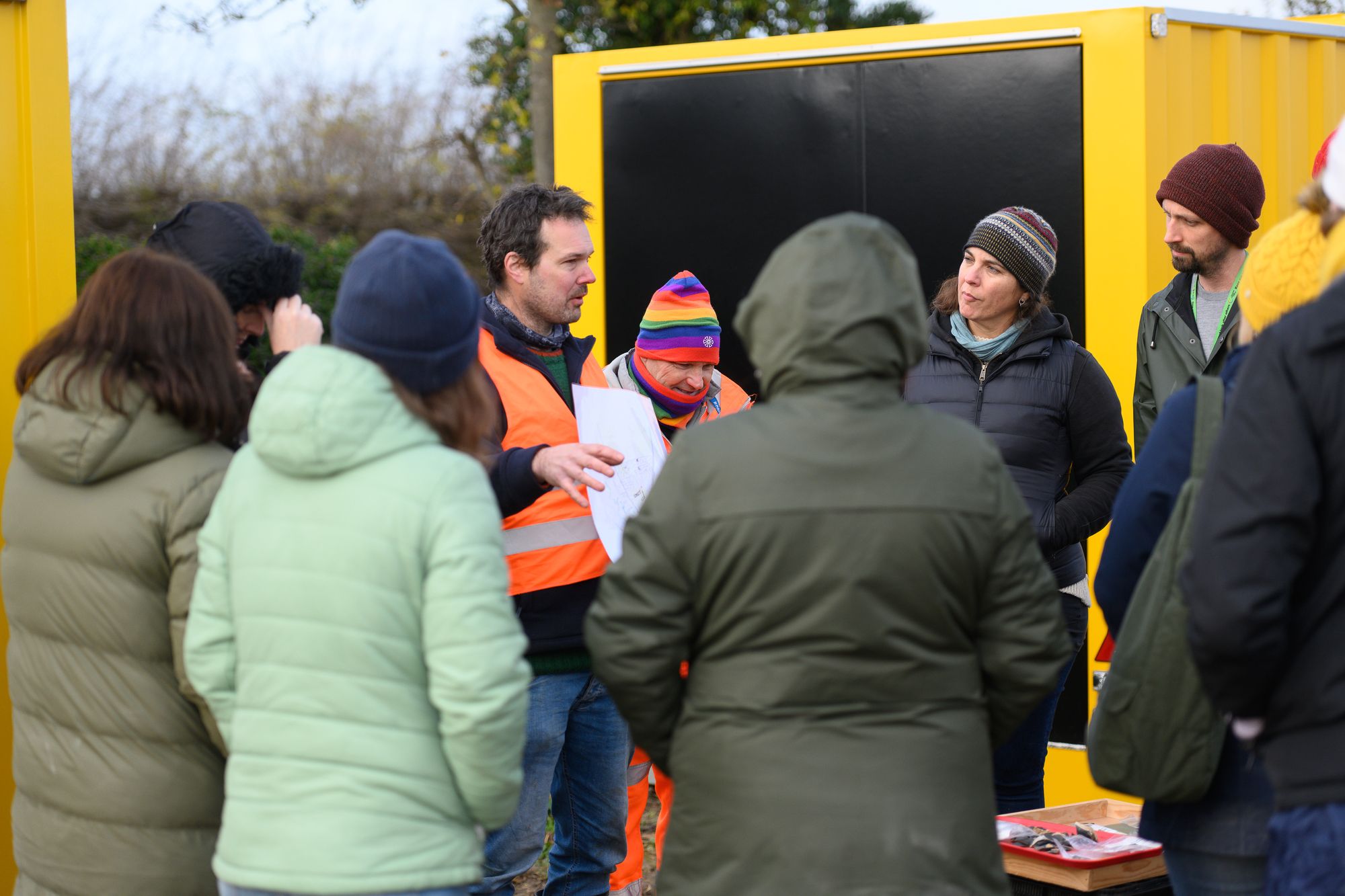
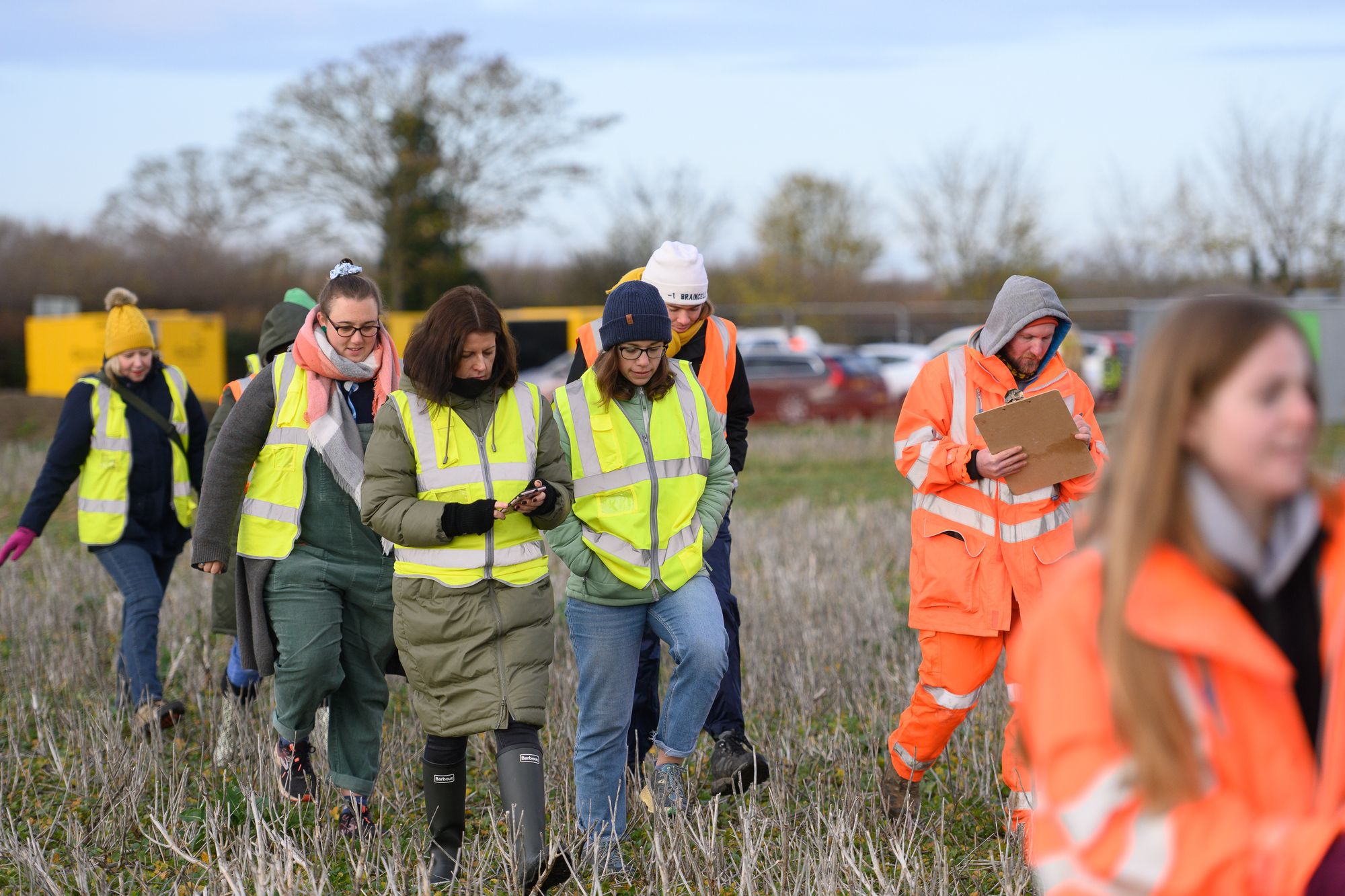
Volunteers were given a safety briefing and then taken to the fieldwalking location.
With new knowledge running through their minds, our excited volunteers were led to our fieldwalking area, given finds bags, tags and a pen, buddied up in pairs and given a grid area to walk.
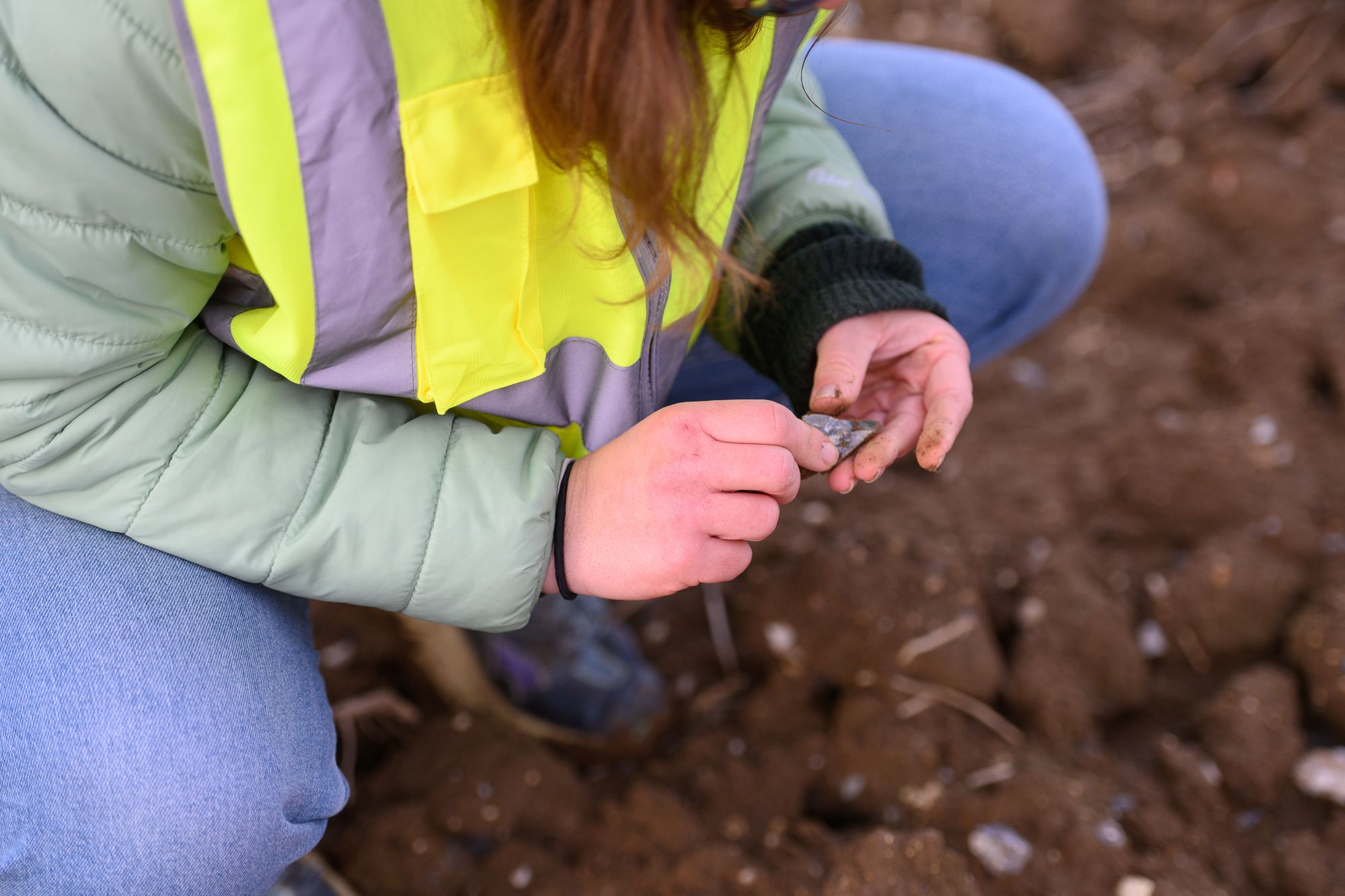
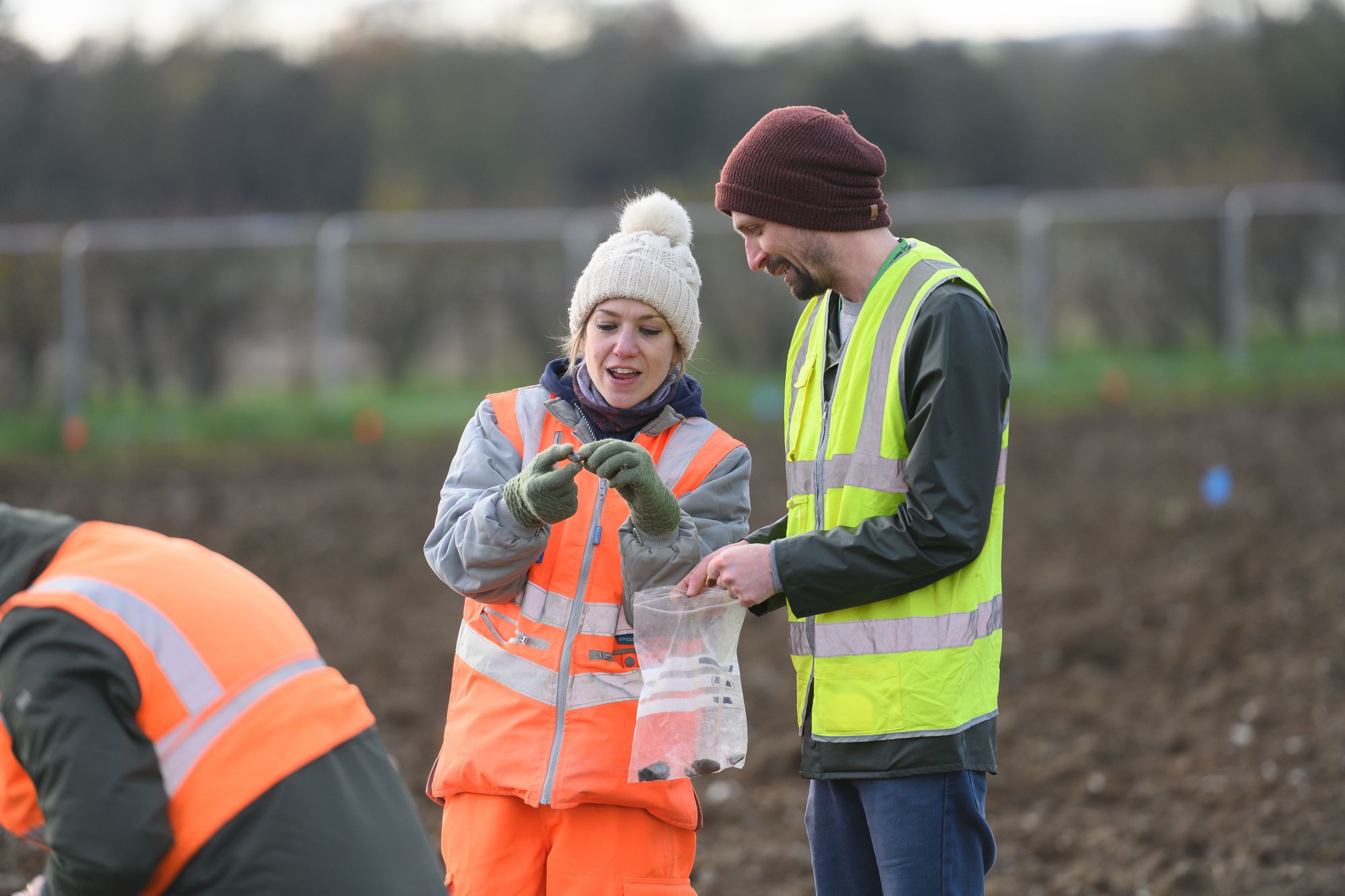
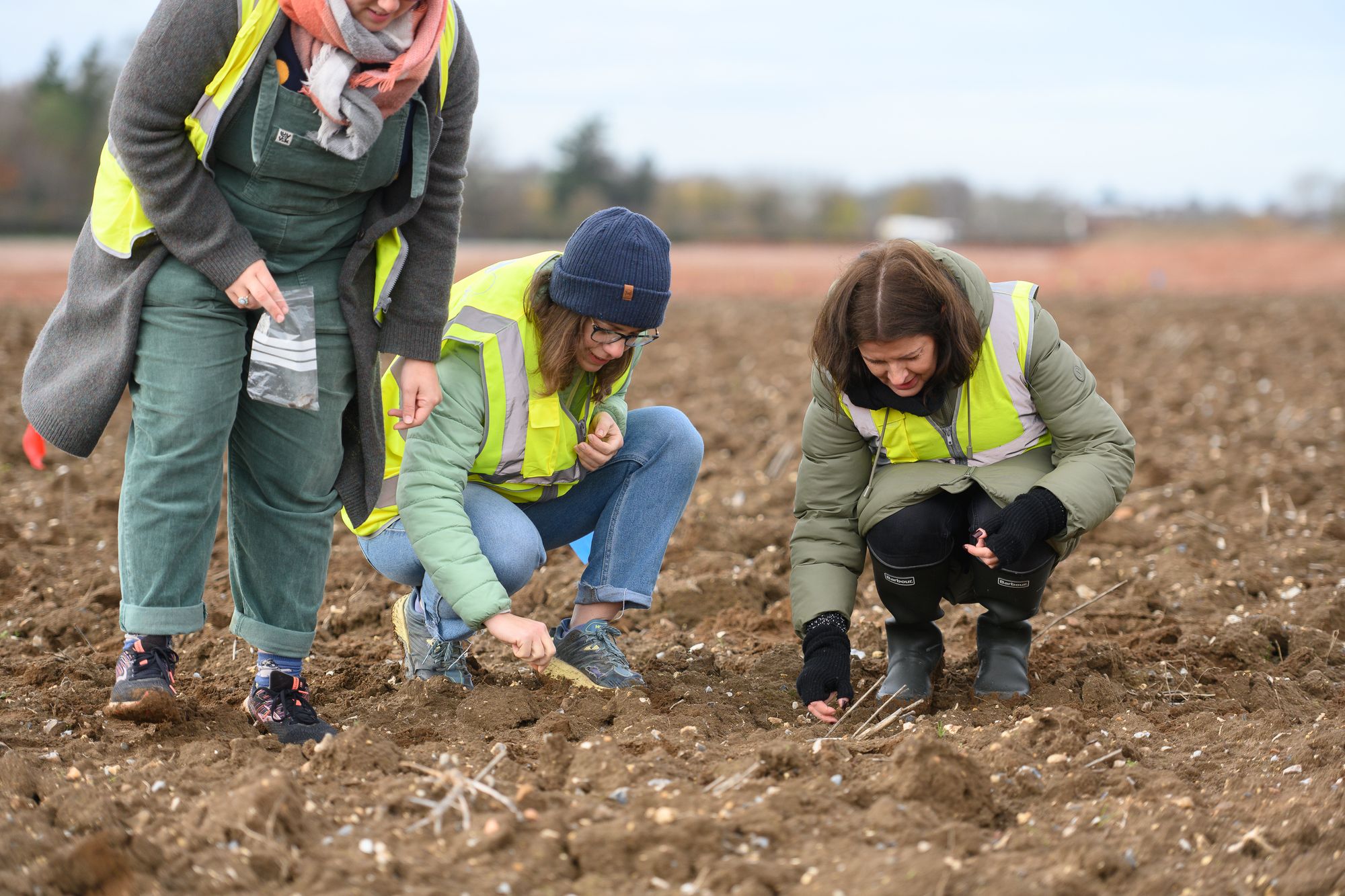
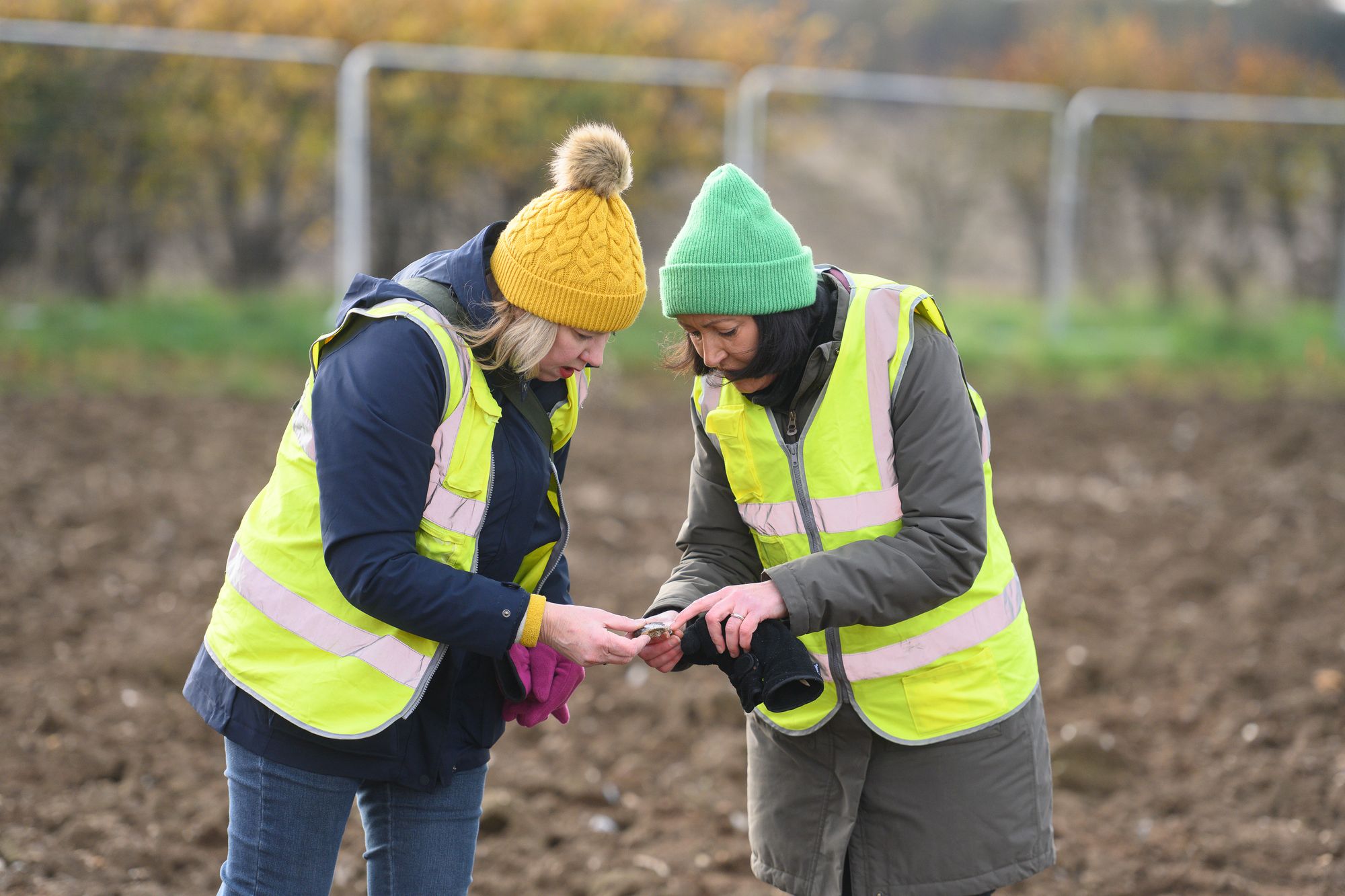
A variety of objects, spanning prehistory to the post-medieval period, were found by our beady-eyed volunteers.
Each grid square was 20x20m and during the 2-hour session, every pair completed their grid square. All had found some flint, some tile, pottery and a couple of post medieval nails.
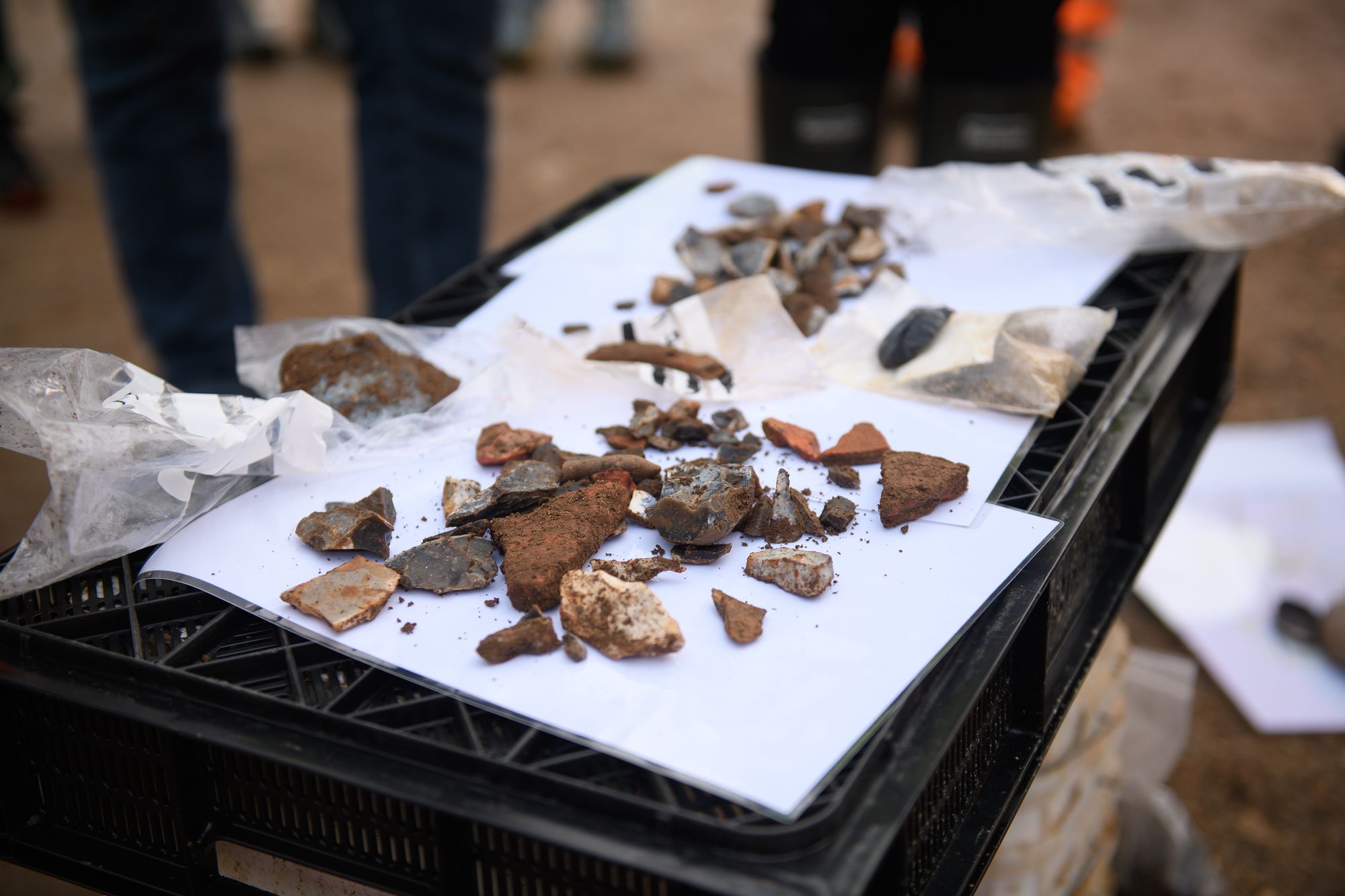
Some of the finds recovered during fieldwalking, which will be processed and analysed by our Finds team.
All in all, it was a productive and enjoyable day for everyone involved. Our next task is to analyse the areas where the finds were located. This, along with other clues from geophysical surveys and aerial photographs, will help us to identify areas for further investigation.
Other posts in this collection
Read our latest posts about the archaeological investigations at Hinxton.

